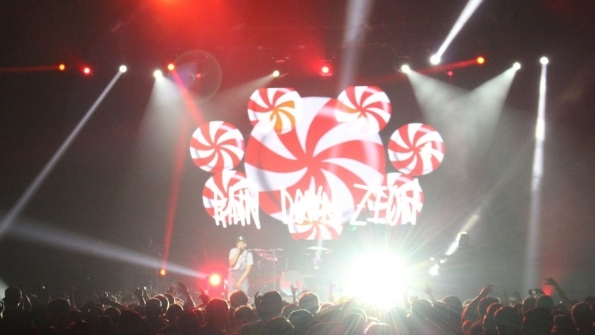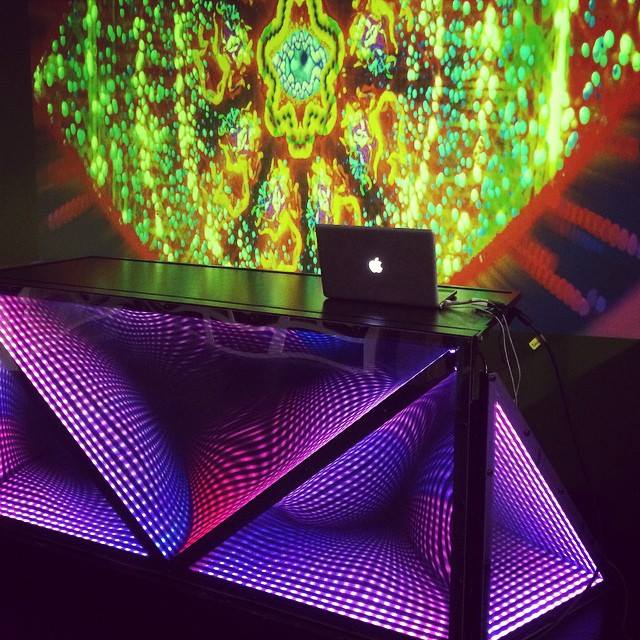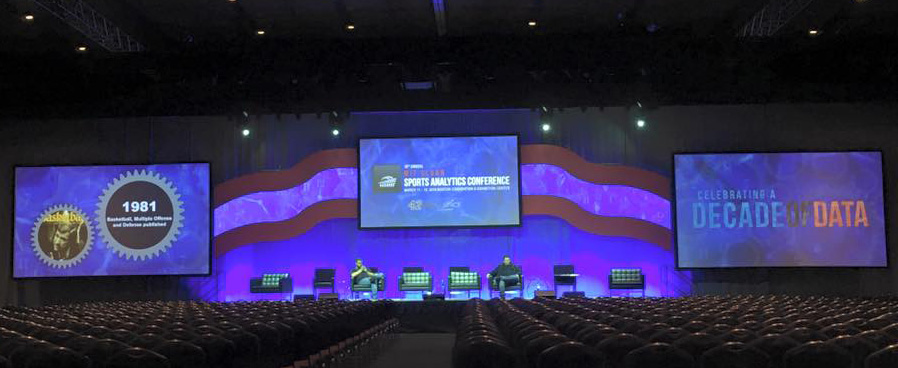Woven Walls
Posted on September 28, 2016
From touring with Snoop Dog, to doing a one off on the rarified grounds of Harvard University, to working rural music festivals Tristan Rudat and his video panels have been welcomed at a lot of places – and with good reason. His walls, which are as likely to be broken into sections as they are to be one integral piece, do more than display IMAG images, text and breakout patterns; they also blend harmoniously into the overall lighting design, making the entire production look more immersive.
Starting out as a VJ for Motely Crue’s Cruefest 2008 tour, the talented New Englander later branched out into the tech side of things, adding “designer” and “content creator” to his job description. We caught up with Rudat to talk about the elements of video wall design and how they are woven into an overall stage presentation.
How do you decide whether to configure a video wall horizontally or vertically? Does either set up influence the kind of content you would display on walls?
“I prefer to wire the walls horizontally whenever that’s possible. Horizontal shapes are generally better to work with when I design, because they are easier for me to map consistently. As far as what’s displayed on the wall is concerned, it’s very rare that the wall itself influences the content. However, sometimes the shape of the wall can suggest video images and patterns.”
What are your feelings about having one continuous video wall as opposed to breaking the wall up into separate sections as you did with Steve Aoki at Harvard Yard?
“I like the continuous wall and the wall that’s broken up – and I work with both. Many folks have a strong opinion one way or the other. Chris Hubbard from Emergency Productions AV showed me the coolness of ‘negative space,’ which is what you get when you break up the video wall. I feel that this negative space is very cool for many applications. It provokes the imagination. Other times the show needs a solid surface for specific prepared videos or for live cameras.”

So when you have the video wall broken up into separate sections do you like to have the same images displayed on all of them, do you like to have different images displayed on different walls?
“In a VJ situation I like to play around with the pieces, and then go full image across all the different walls. I will do whatever it takes while creating dynamics and flowing with the music. In other instances the video tiles are used more as set pieces with looks that change or stay the same.”
What advice do you have on balancing video and light? How do you keep one from overwhelming the other?
“The easiest thing to do is adjust the overall LED Video Wall brightness. It’s that 1-16 or 32/64 number right on the front of the CHAUVET Professional VIP Rack Unit. Run the VIP on about 8-10 at the start or even 04-06 if you really want the lights to breathe. This is based on VIP settings 01-16. Then you can manually turn the entire rig up or down a little as the night progresses. I like to establish some nice looks with the LD and or Laser operator. I listen closely to their input as well as that of producers and creative consultants.”
Do you ever just use your video wall for color, rather than displaying images?
“Yes, definitely, for hip hop sometimes…or big moments in the night for EDM. During a recent Kill Switch Engage video shoot we used the CHAUVET Professional PVP S7s for solid coloring and also strobing in the music video. It was a powerful and colorful effect.”
We know you’ve done a lot of spectacular one off shows with your video walls. What are the big challenges about doing a video wall for a one off?
“The big challenges for a one off are time and information. You usually only get a little bit each!”
How do you determine the right pixel pitch resolution for a video wall when you do a gig?
“For me it’s easy…7mm!!!”
